Blog |
-
- >
- >>
|
|
8 Jun 2023 16:16
|
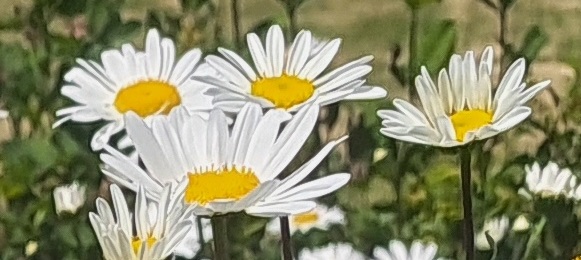 Ox-Eye Daisies are one of the best British Wildflowers for the garden. They are commonly seen in meadows, verges and grasslands, flowering from May/June onwards into late summer. Ox-Eye Daisies are one of the best British Wildflowers for the garden. They are commonly seen in meadows, verges and grasslands, flowering from May/June onwards into late summer.
Plants are tall, perennial and favour infertile soils, so are ideal for wilder parts of the garden. They are loved by insects and some birds and largely look after themselves. They are easy to grow from seed, and can be sown directly into the ground in spring or autumn.
See here to grow from seed.
Photo taken below of daisies flowering in our garden in Cornwall in early June.
 |
|
Permalink
|
| 0 Comments
|
|
|
22 Sep 2022 16:21
|
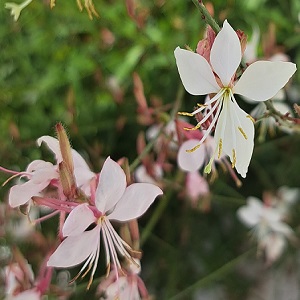
Whirling Butterflies continue to flower prolifically into late September. These are great plants suitable for a wide range of gardens.
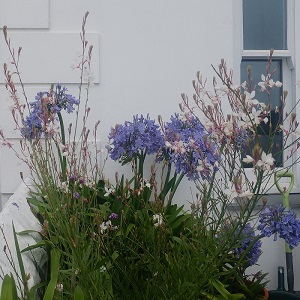
This plant is growing amongst Agapanthus in a small patio garden overlooking the sea here in the Roseland Peninsula, surviving a very hot and dry summer with no damage. It is combined exclusively with blue Agapanthus, which creates an appealing impression in a small space. These plants look equally good growing in naturalistic gardens and borders, effectively filling spaces and helping plants blend into one another to provide waves of colour and form.
Gaura normally flowers in white or pink. White flowers bring brightness into gardens in autumn when the natural light is reducing. Gaura ‘The Bride’ is a good white variety available to grow from seed. The white forms of Gaura sometimes flower with tinges of pink, which I think adds to their appeal. These are perennial plants from the southern states of the US and are fast growing and hardy for most of the UK (RHS Hardiness H4). Sow the seeds in late winter/early spring for first year flowers.
Plants grow into appealing clumps over the years. They need little attention, with just a cut back in autumn or spring. Best to cut back in spring rather than autumn in colder areas, as a cold winter can damage new growth. Cuttings can be taken in spring and summer and mature plants can be divided, so once you have these plants in your garden, you can reproduce as many as you need for yourself.
Buy Gaura seeds here.
|
|
Permalink
|
| 0 Comments
|
|
|
18 Mar 2022 18:29
|

Cut flowers are easy and rewarding to grow from seed. Whether you are a cut flower grower or a gardener who brings flowers into the house, we have some ideas for you.
Aim to achieve a mix of colours and textures and a prolonged flowering period from early summer into autumn. Try growing brightly coloured flowers and contrast with more subtle green and white flowers. Include different flower shapes, such as daisies contrasting with umbels. Include a variety of textures, such as strawflowers and grass flowers. And add scented flowers such as sweet peas and tobacco plants.
A prolonged flowering period is achieved by sowing seeds in batches every fortnight during spring and early summer, spreading out the growing effort and flowering times. Also notice the natural flowering time of plants to include early summer and late autumn colours. Add plants whose flowers and seed heads can be dried in autumn so you can extend flower arrangements into the winter.
Good cut flowers should last well in a vase and have strong stems that hold the flowers upright. Here are 15 cut flower seeds to try this year.
Hardy short-lived perennials with silky petals in pastel colours from May to September.
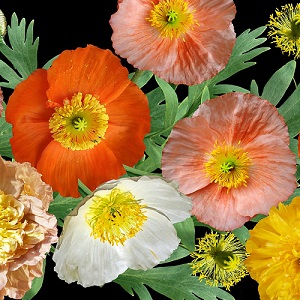
Hardy annuals with large umbel-shaped flowers in white from June to the first frosts.

Just-hardy annuals with appealing and unusual yellow-green flowers from May to July which look good both fresh and dried.
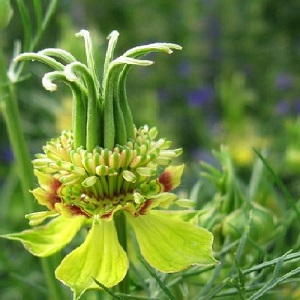
Hardy annuals for direct sowing with a good range of colours from May to August.
Half-hardy annuals in a wide range of colours from July to the first frosts, with exceptional vase life, and good dried flowers for winter.
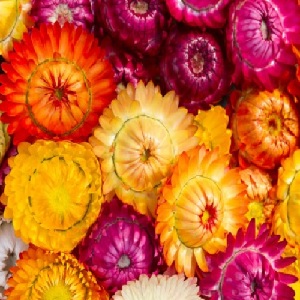
Half-hardy annuals in a new dwarf mix in shades of white, pink and red from June to October. These dwarf varieties do not need staking. Fluted forms are such as Cosmos 'Seashells' are also popular.
Half-hardy annuals with a very long flowering period from May/June to the first frosts in hot colour mixes of yellow and orange.
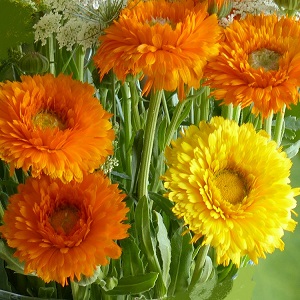
Half-hardy annuals with exotic leaves and large spidery flowers in white and pink from July to September.
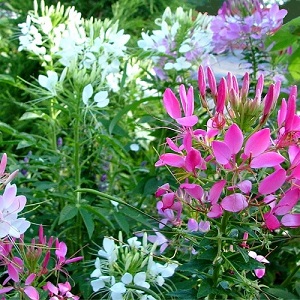
Tender annuals with upright dark blue flowers, flecked with white, from June/July to the first frosts. Flowers are good both cut and dried.
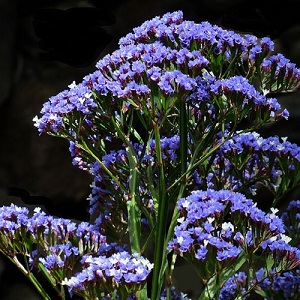
Half-hardy annuals with scented lime green flowers from July to September contrasting well with other flower colours.
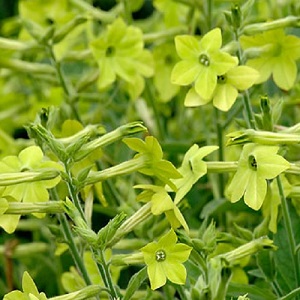
Half-hardy annuals in hot flower shades, with appealing dark centres, from July to the first frosts.
Half-hardy climbing annuals with big, scented flowers in a range of colours from June to August.
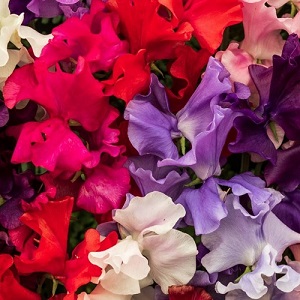
Hardy perennials for years of hot colours from July to September with appealing curved flowers.
Flowering starts reliably in the second year.
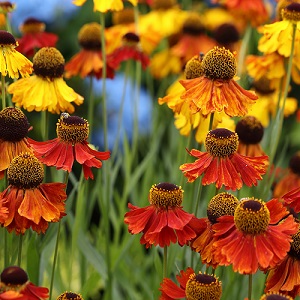
Hardy perennial daisies for early flowers in May to June in shades of red and pink. Flowering starts reliably in the second year.
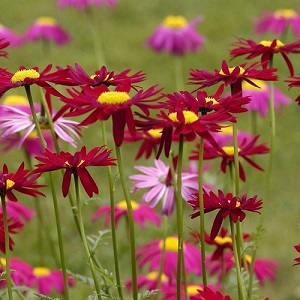
Half-hardy annuals/perennial grasses with appealing fluffy flowers from June to September that are good both fresh and dried.
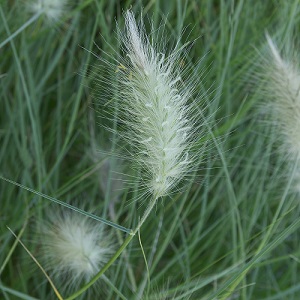
|
|
Permalink
|
| 0 Comments
|
|
|
7 Jan 2022 15:54
|
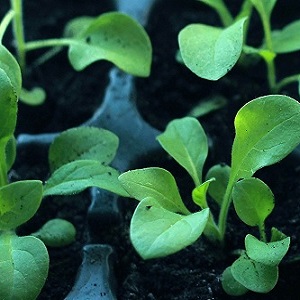
Winter can be a quiet time of year for gardeners, but not for those of us who like to start sowing early.
- Early sowing maximises the use of your growing space throughout the year, and plants flower earlier than normal when sown in winter. Succession sowing, where you sow batches of the same seed two or more weeks apart, delivers a longer flowering season.
- Early sowing is very useful for some perennials, which flower in the first year when sown early, when you may normally have to wait for a second season of growth for flowers.
- For early sowing you need a greenhouse or some windowsill space. You need to provide some heat to encourage the seeds to germinate, and a propagator can be very helpful.
- Damping off diseases can be an issue with seed sowing at this time of year. These diseases cause the death of seedlings below and above the soil. Clean trays and fresh bagged compost help to keep this under control. Controlling the moisture levels of seed trays also reduces damping off and rotting of seeds.
- With winter comes lower light levels and young seedlings need light to thrive. Choose a sunny windowsill or greenhouse to grow them on once you have transplanted the seedlings into small pots. Grow lamps are especially useful at this time of year, encouraging the seedlings to grow faster and stronger.
-Scabious (1st year flowering perennial)
And for sowing outdoors in a greenhouse in winter:
-Verbena (1st year flowering perennial)
|
|
Permalink
|
| 0 Comments
|
|
|
31 Dec 2021 16:32
|
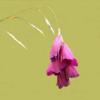 Behind the scenes at PlantGenesis this week. Behind the scenes at PlantGenesis this week.
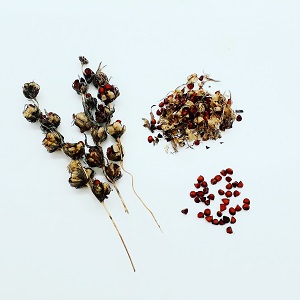
We have been processing Angel's Fishing Rod seeds in preparation for packing. Those of you who save seed will know it is a much bigger job drying and cleaning seeds than most people anticipate. When you open a packet of seeds you expect it to be free of chaff. Clean seeds store better, free from disease, and are easier to handle when sowing.
These Dierama pulcherrimum seeds have been grown in Cornwall and harvested this autumn. Please get in touch if you have expertise in growing particular flowers or herbs, are based in Great Britain, and would like to grow for us.
|
|
Permalink
|
| 0 Comments
|
|
|
21 May 2021 17:00
|
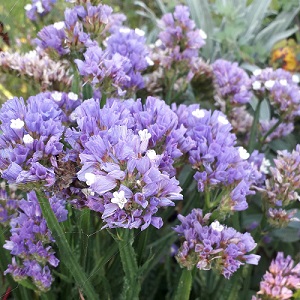 It is easy to grow dried flowers from seed. Now (May and early June) is a good time to start. Many dried flowers are sown from seed in the late spring. This is because sowing can be done straight into the garden, rather than starting indoors earlier in seed trays. The plants grow quickly in the warm spring sunshine and look great in the summer. They are then harvested for dried flowers that deliver a long-lasting indoor display over winter. It is easy to grow dried flowers from seed. Now (May and early June) is a good time to start. Many dried flowers are sown from seed in the late spring. This is because sowing can be done straight into the garden, rather than starting indoors earlier in seed trays. The plants grow quickly in the warm spring sunshine and look great in the summer. They are then harvested for dried flowers that deliver a long-lasting indoor display over winter.
To Try
Here are a few to try this year:
Helichrysums or Strawflowers – These are some of the best ‘Everlasting’ flowers to grow from seed. They are available in a wide range of colours. The 'Choice Mixed' variety is good if you are looking for a range of colours for dried flowers. Or choose individual shades for your borders and if you are growing for an event. ‘Silvery Rose’ and ‘White’ are popular varieties for wedding flowers.
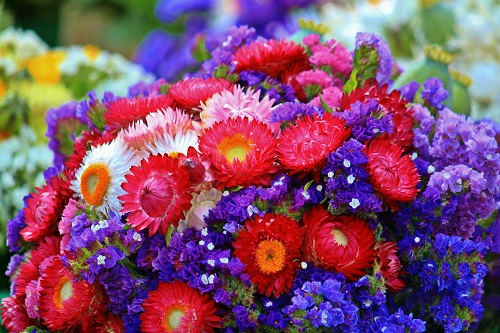
A mix of Helichrysums and Limonium flowers
Sea Lavender – Also known as Statice and Limonium. These are slender and ethereal plants with attractive sprays of flowers, often splashed with white. Try Apricot for a warm winter colour. Or Iceberg for wedding flowers.
Poppies – Annual poppies are one of the easiest plants to grow from seed. Let the flowers open fully and fade away, as you pick the seedpods for drying rather than the fresh flowers. Poppy ‘Danish Flag’ is a good choice. Or try a paeony poppy called ‘Paeony Scarlet’. Perennial Oriental Poppies and Icelandic Poppies also grow attractive seedpods. ‘Icelandic Mix’ is one of the best poppies to grow in a garden as they have a long flowering period.

Poppy 'Icelandic Mix'
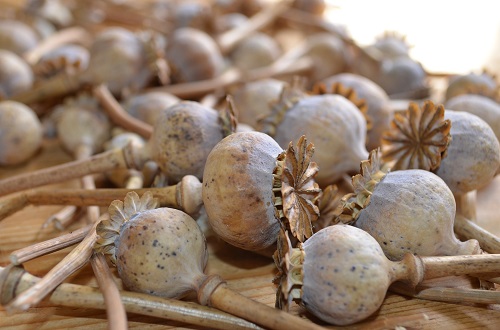
Dried poppy seadheads
Quaking Grass – Grass flowers add movement and drama to a dried flower arrangement. They can also be added to fresh flowers to mix up the colours and textures.
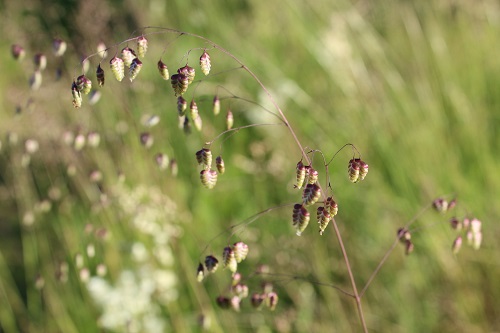
Briza media flowers
To Grow
The ‘wildflower’ approach: Choose your packets of seeds and mix the seeds together in a bowl. Clear a sunny section or ‘river’ of soil within your garden. Clear the section of weeds and prepare a seedbed. Scatter the seeds into the seedbed, rake over and water. The seeds germinate in 1-3 weeks depending on the air temperature. The colourful mix of flowers can look dazzling, verging on gaudy, so it is a matter of taste and artistic flair. Sow more than you need if you are looking for a strong floral display in your garden, as flowers for drying are picked early, and you leave the excess in the garden to flower on into autumn.
The ‘organised approach’: Flowers grown for picking are traditionally grown in rows in the productive part of a garden. Or they can be sown in individual groups or drifts of colour in your garden - you sow one variety of seed at a time. If using this approach, prepare drills in the soil, or circles or crosses, and sow each packet of seed sparingly into each drill. Cover the seed lightly with soil and water. This approach gives you more control of the timing, colours and quantity of flowers you want to grow. It also helps with weeding as it is easier to distinguish weed from seed when the seedlings are small.
To Pick and Dry
Time the picking of the flowers carefully. Helichrysums are best picked just before opening fully and Sea Lavender when just opened and fresh. Poppies are left on the stems until the pods have turned from green to brown. Quaking grass are best picked once fully formed and before autumn wet sets in. Pick long straight stems, tie them together in small loose bunches and hang upside down in a cool and dry place away from direct sunshine. Avoid direct sun as this causes the colours to fade. The flowers dry over a period of a few weeks. |
|
Permalink
|
| 0 Comments
|
|
|
-
- >
- >>
|
|
